If you thought the volcanic eruption in Iceland was awesome, wait till you see what Mother Nature has in store for us. Increased seismic activity around volcanoes suggests we can look forward to more spectacular eruptions in the months ahead. Mount Redoubt in Alaska is stirring from its slumber while Mount Etna in Italy threatens to enter a new eruptive period. Preparations are being made to evacuate 3,000 people from the Gaua Volcano on the Pacific island of Vanuatu as renewed activity suggests a large eruption is imminent. The Ischia Volcano off the coast of Naples in Italy has some observers worried, although as SOTT.net pointed out in its Connecting the Dots installment for March, it's the 13 major underwater volcanoes off Italy's southern coast that are scientists' primary concern. Somebody had better contact air traffic controllers in central America and explain to them the intricacies of ash particles and jet propulsion. When an eruption at Guatemala's Santiaguito Volcano sent a plume of ash 30,000 feet into the atmosphere and dusted a large swathe of western Guatemala late April, regional airspace remained open for business. Either politicians there care nothing for airlines' safety or they know something the "experts" in Europe do not.
The Global Warmists have jumped on the hysteria generated by this "ash cloud" to claim that increasing volcanic activity is due to decreasing pressure from melting ice caps, which of course is due to 'man-made global warming'. But the ice caps cannot be melting because the increasing extent of sea ice in the Arctic broke records throughout April. Other warmists found their silver lining in the flight ban itself, claiming to have quantified the amount of evil CO2 the planet was saved from grounded planes! Admittedly, the skies were brilliant blue over Europe during the flight ban's first week, but that is besides the point. The point is that oceans absorb and thus regulate the amount of CO2 in our atmosphere. It is statistically redundant attempting to quantify the net atmospheric CO2 levels from a 70% reduction in air traffic over one continent for 6 days! It may seem like a significant factor from a local perspective, but in terms of the overall system, it isn't. Fred Goldberg explains that "one can never find more than 4 percent of CO2 in the atmosphere coming from humans."
Al Gore's financial links to chemical and oil companies keep bubbling to the surface and yet his convenient lies continue to hold court with official culture. In the UK, Lord Oxburgh's "Inquiry" recently found "absolutely no evidence of any impropriety whatsoever" after its brief whitewash of an investigation into Climategate. All he had to say on the matter was that "We found a small group of dedicated if slightly disorganised researchers who were ill-prepared for being the focus of public attention." The British government followed this up by announcing that it will be employing 'experts in extremism' hunting down anyone who so much as doubted the CRU's (un)scientific work.
Clearly something beyond humanity's role is causing the planet's surface to open up. Following the strong earthquake in Sumatra earlier last month, locals noticed that the seabed has risen along the Aceh coastline and that rocks and mud are spewing out from fissures, prompting them to wonder if "an undersea volcano could be forming." The strong seismic activity gives us an indication of the activity going on beneath our feet and especially below the oceans, where much bigger and much more active volcanoes are warming the oceans. I wonder if the Deepwater Horizon oil rig disaster in the Gulf of Mexico came off its hinges due to the sea floor rupturing? One angle now being examined is that a bubble of methane triggered the blast onboard the rig. This jives with SOTT.net's observations of reports of methane bubbling up from below the oceans in ever greater quantities. There have been devastating explosions caused by underground methane leaks at mines in Russia, China and the US in the past month alone.
Whatever the weather
Copious amounts of rainfall hit Rio de Janeiro last month as Brazil's second largest city experienced the biggest deluge in its history. Around 150 people were swept to their deaths in the initial flooding and soon 200 more were buried when a devastating landslide hit the Morro Bumba slum. Already in May there has been heavy flooding in Dagestan, southern Russia and flash floods have killed at least 66 in Afghanistan. A landslide in northern Italy killed 11 late last month when a train was knocked clean off its tracks; last week massive landslides were reported in the Chongqing province of southern China, where sudden downpours flooded the city of Hunan and left at least 39 people dead. A severe cyclone in eastern India that killed at least 140 people also left over 500,000 homeless last month, while to the north of the country over 40 people were killed in devastating thunderstorms last week. Tornado season arrived in the western hemisphere with The Bahamas and then the southeastern US seeing twisters level homes and wreak "utter obliteration" in Louisiana, Arkansas, Alabama, Mississippi and most recently Oklahoma. But the biggest precipitation event hit Tennessee, which experienced sudden record-breaking flooding late in the month as storms dumped up to 16 inches of rain over two days, turning highways into rivers and prompting mass evacuations from Nashville. In fact, the scale of the flooding there only became apparent days after the event. Shades of Katrina:
It's not difficult to imagine that if it were cold enough, that would translate to roughly (depending on the type of snow) 115 inches of snow (over 9 feet) - a rate of precipitation that gives us a clear indication of how suddenly ice ages develop. Indeed while this was going on the northeastern US states received a record-breaking late dumping of up to two feet of snow that caught people off guard following a brief Spring thaw. Less unusual were similar blasts of Arctic air that brought snow to the central Canadian plains at the beginning and end of the April, but how anyone still believes that the planet is warming after snow blanketed southern California, northern Mexico and southern France in the first days of May is beyond comprehension. You have to go back to 1969 to find the last time Tokyo experienced such a late snowfall and back to 1908 to find the previous coldest April in Korea.
The harshest winter in living memory has naturally delayed the arrival of Spring in many places, but even after many places thawed out, late 'rebounds' of icy weather threaten to stunt Spring growth throughout the growing season. Inhabiting the coldest place on the planet, Siberians are still struggling with their second-coldest winter in over a century. Indeed the polar region is a useful indicator of the cooling trend. Russian scientists say that the Arctic has in fact been steadily cooling since 1998. Lawrence Solomon reports:
"The Arctic ice set 30 records in April, one for each day. According to satellite data received by the Japan Aerospace Exploration Agency, the Arctic was more ice bound each day of April than it had been any other corresponding day in April since its sensors began tracking the extent of Arctic Ice in mid 2002."'Starquakes'
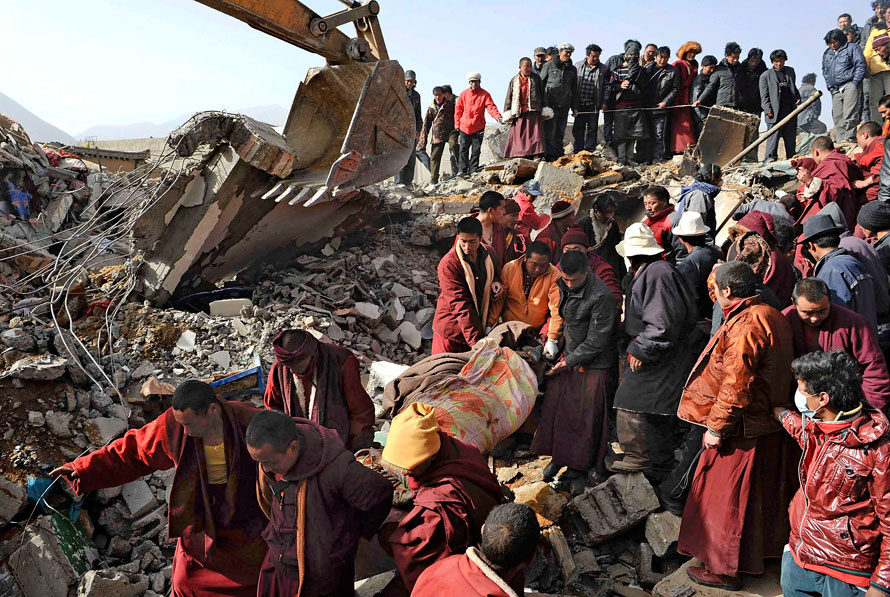
An earthquake has shaken the west of Ireland for the first time since records began.In mid-April a "huge green fireball" witnessed by thousands across several northern US states left a trail of fires along a one-mile stretch of forest in southern Wisconsin, US. Meteorites were later found.
Locals felt their houses shaking and heard loud bangs as the mini-quake, measuring 2.6 on the Richter scale, hit north Clare on Thursday night.
Liscannor resident Martin Doyle said: "I felt the whole roof shake. I thought the wall was collapsing. My neighbour called and he thought that the sound he heard was me falling down the stairs."
Rosemarie Buckley, who lives nearby, also said: "The house shook and we heard a loud bang."
Her husband Tom added: "We didn't know what it was. We thought it might have been a meteorite or something."
Late in the month three houses in close proximity on the Duren Strait in Indonesia were struck by falling debris that "shook the roof" and made "a lot of noise" according to terrified residents.
Blast in East Jakarta Believed to Be Meteorite
Lapan researcher Abdurrahman said no fragments of the projectile had been found but the deep crater in the floor of the house, the residual heat footprint and melted items pointed to a meteorite.Meanwhile stargazers in Southland, New Zealand were amazed to see a slow-moving fireball blaze overhead one evening. And check out this fiery pebble that landed on a beach in Israel last month.
Now let's take a look at the exhaust trail left by the Space Shuttle Discovery as it blasted off from Cape Canaveral early April. Onlookers were bewildered by the "psychedelic" patterns in the sky:
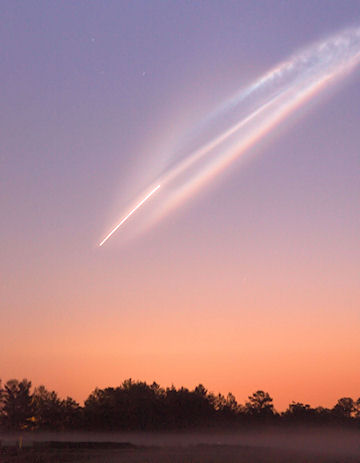
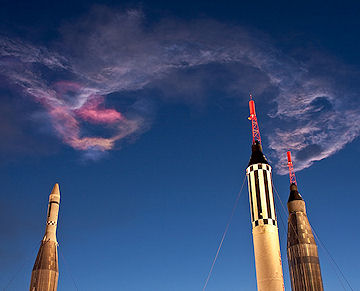
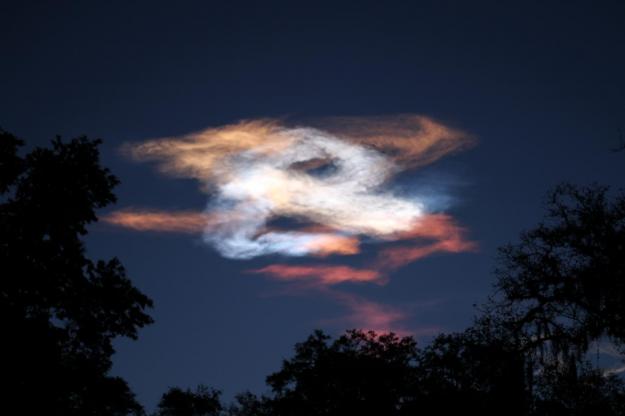
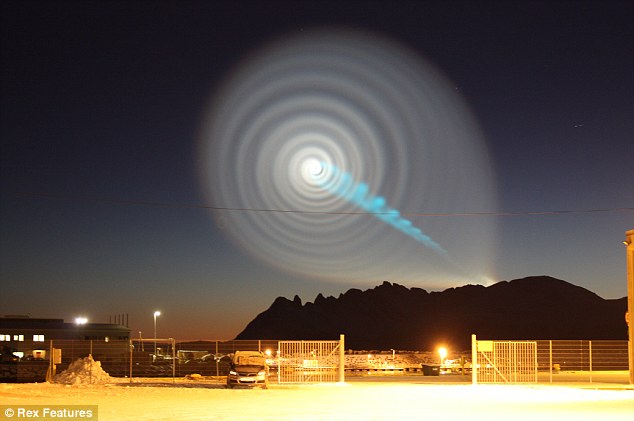
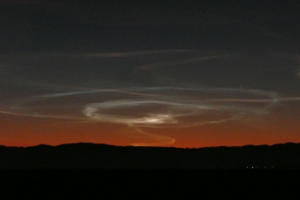
What is causing trails that might otherwise quickly dissipate to instead take on strange forms? The awesome meteor displays now happening on a regular basis provide a clue. Something wicked this way comes. The inner solar system has steadily become crowded with cometary debris. Don't expect officialdom to risk mass panic by explaining all this to you anytime soon - check out the data for yourselves. While some of the larger fragments penetrate to Earth's lower atmosphere (even to the ground) the upper atmosphere has attracted the electrically-charged particles discharged by comets and coated the planet in a film of variable density. The contrails of airplanes, rockets, space shuttles and incoming meteors become suspended in weird and wonderful form when they interact with the volatile mixture of cometary dust, ice crystals and volcanic plumes.
Eyjafjallajokull's eruption is another significant marker as we approach catastrophic climate change brought on by the build-up of comet dust in the upper atmosphere. The marked increase in the number of strong earthquakes and volcanism strengthens SOTT's hypothesis that the planet's rotation is slowing down, however slightly, weakening the magnetic field and thus literally "opening up" the planet.
Bear in mind that most volcanoes are underwater, so as they warm the planet's oceans more water is evaporated into the atmosphere where it meets the cooling upper atmosphere and precipitates rapidly as deluges of rain - or, as we've seen above, as snowfall where there shouldn't really be any. We are approaching a tipping point where the feedback loop rapidly locks the planet's climate cycles into ever-increasing precipitation falling back as snow. When we also factor in the low solar activity (sunspot numbers are at a 90-year low) and the planet's intensified water cycle (caused by the warming oceans), an abrupt system shift into a new Ice Age is on the cards. I don't dare call when this will happen, but I'm not alone in thinking that it will happen soon - very soon.
Further reading
Comets and Catastrophe Series, by Laura Knight-Jadczyk
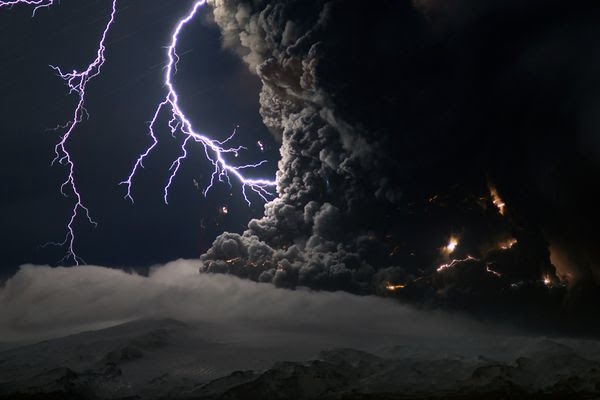

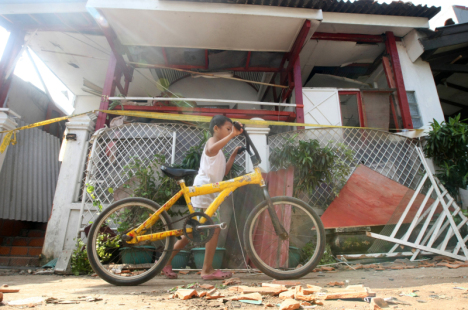
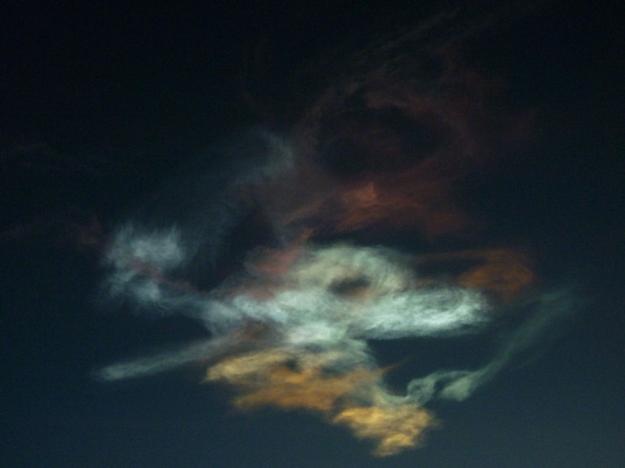



More than half a metre of snow fell in the Moravian-Silesian Beskids range in the north of Czech Republic. According to the local meteorologist this is unheard of. The amount of precipitation is extreme and he's never seen this much snow this late. [Link]And not to forget there are floods in the same region as well.
Finally a couple of warm days in the North-East of Scotland, wondering though how long it will last.